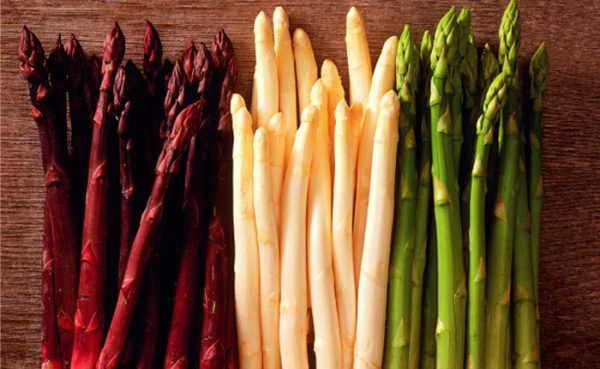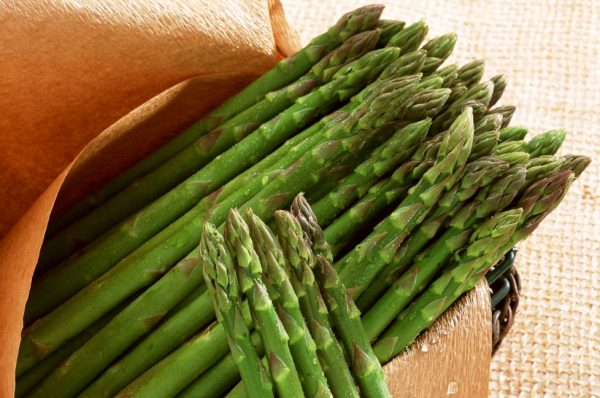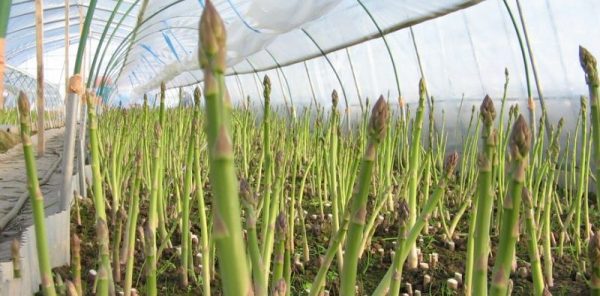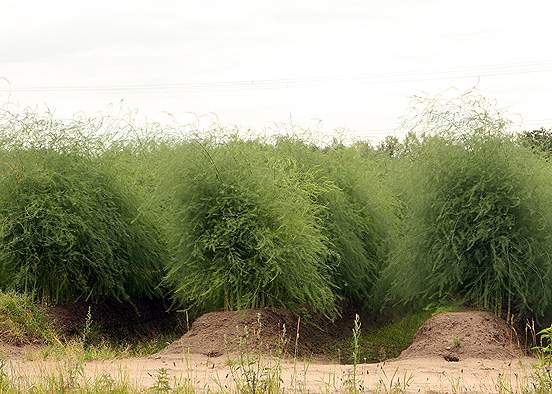Asparagus: growing, planting and harvesting
Content
Growing from seeds
Asparagus is a frost-resistant perennial herb, it perfectly tolerates winter frosts even up to -30 degrees, but can suffer in the spring from a cold snap to -5. It can grow up to 1.5 - 2 m in height, it feels good in one place for 20 years. The pretty red berries contain only 1 or 2 seeds and can be germinated for 5 years. This perennial plant is so leisurely that the first harvest will be given no earlier than 3 years from the day of planting. This is probably why the question “how to grow asparagus” turns for many summer residents in Russia into the question “how to wait for its harvest”. Caring for it is no more difficult than for other perennials, there is a set of agricultural techniques, following which will certainly lead to a good result if planted in the suburbs.
Planting asparagus requires a lot of space; it cannot be done at home, except that seedlings can be grown at home. The seeds are distinguished by poor and slow germination, so many summer residents prefer to sow them in a greenhouse or at home, and then plant ready-made seedlings in open ground. In the south of Russia, you can sow them in the spring right on the garden bed, but you need to remember that for germination they need an air temperature that has reached + 25 degrees, and the soil warmed up to + 15.
The seeds must first be prepared at home: soak for 2 days in warm water, it is desirable to maintain the temperature at + 30 degrees, then they need to be dried. Some growers insist on using a growth stimulant. Only after such care are they ready for sowing.
If warm weather permits, then from mid-April you can sow. Asparagus loves neutral nutrient soil, grows well on sandy loam. But caring for her must necessarily include feeding. For sowing, you need to prepare the soil in advance. Mix well 2 parts of garden soil with sand (1 part), peat (1 part) and manure (1 part). Acidic soil must be calcified in advance.
The seeds must be placed in the ground, lightly sprinkled on top (1 cm), watered with a spray bottle. For this period, care focuses on not letting the earth dry out, it will need to be moistened all the time from a spray bottle, otherwise the seedlings will not appear. You can cover the crop with glass to retain moisture for a while, but every day you need to ventilate and moisturize. After a month and a half of such care, the result will be - cute delicate plants, before 6 weeks they usually do not germinate.
Mid June is a good time to transplant plants to a permanent location. As adults, they can be transplanted in autumn or spring, but they can do fine without it, they can grow in the same place all the time.
How to sow seedlings
Some summer residents believe that young plants should be replanted every year, and adults - after 10 years, then each of them can bear fruit even longer.Simultaneously with the transplant, you can divide the bush, this is an excellent opportunity for the reproduction of asparagus, you can breed it with cuttings. But most often in the Moscow region, asparagus is grown through seedlings.
At home, you can prepare seeds by soaking them with a solution of a growth stimulator for a couple of days, then dry them, sow them in a special dish in March. You can germinate seeds in a greenhouse or at home, you need the air temperature to be at least +25, and the soil warmed up to +15 degrees (if we are talking about a greenhouse). The soil should be pre-fertilized with compost, humus, mineral fertilizers. In the boxes, grooves are made with a depth of 6 cm at a distance of 30 cm, the seeds that have nailed are planted at a distance of 7 cm from each other. Seeds should not be germinated on a cloth before the roots appear, such roots will be too fragile and weak, they will die during planting.
Seedlings need to be weeded, watered, loosened around the soil, fed with urea or mullein infusion - that's the whole care. A seedling that already has 5 stems, a well-developed root system is considered to be of high quality, such plants are ready for transplantation from home to garden. At the site, grooves 35 cm deep are prepared, at least 20 cm of rotted manure is placed there, humus is placed on top of it, in which seedlings are planted. A distance of 0.5 m must be left between the seedlings so that they develop normally.
Video "Growing"
From this video you will learn about the peculiarities of growing asparagus.
Asparagus care
Caring for asparagus is no different from caring for other plants - it needs to be watered, weeded, fed, and protected from pests. For the winter it is sheltered from the cold, in the spring it is protected from frost. Asparagus loves moisture, so you need to water it often, but do not allow water to stagnate near its roots. After watering and weeding, you need to loosen the ground.
Top dressing should be regular, and they start right from planting. If you need to plant in the spring, then add up to 10 kg of humus per 1 square meter of area. For autumn plantings, superphosphate (60 g), potassium sulfate (30 g), ammonium sulfate (20 g) are added.
Agricultural technology involves 4 top dressing. The second feeding is carried out a month after planting the seedlings: watered with a diluted mullein. The middle of years is a period of intensive growth after flowering, asparagus is fed with a solution of chicken manure infusion or complex fertilizers. In the fall, before the onset of frost, asparagus is fed with a special fertilizer that slows down growth, you can use superphosphate and potassium salt. Two and three-year-old plants must be fed in the spring, they use nitrogen, potassium phosphorus fertilizers for this. Adequate nutrition for this perennial will ensure a good harvest.
When an asparagus is in bloom, it is advised to spray it with an insecticide to ward off pests. And in the fall, before frosts, you need to cut off all the stems, spud the plants, cover with compost or peat. The lower part of the stem should be covered by 5 cm so as not to freeze in winter.
Harvesting the harvest
A summer resident grows seedlings at home, plants them in a garden bed, provides constant care for 3 years, and only after that, in the fourth year of life, he can take the first crop. Perhaps this explains the rare cultivation of asparagus in our dachas. The first shoots that we love to eat appear precisely in the fourth year of growth. On a May day (sometimes earlier), they begin to lift the ground - that's when they need to be collected. It is necessary to carefully rake the earth (where the shoot lifted it), cut off the sprout at the base, fill the holes with earth again. You need to cut off all the shoots, this stimulates the growth of new ones.
The first crop is harvested no more than a month, so as not to weaken the young plant. Collecting shoots from old plants continues until the end of June. Asparagus grows quickly, and the shoots that have risen above the ground are already losing their quality.Therefore, the crop is harvested often - every 2 - 3 days, it is advisable to do this in the morning and in the evening, when the sun does not bake that way.
After harvesting, the asparagus is fed, the ground near the roots must be leveled. The seeds are harvested when the berries are fully ripe - then they will turn bright red. Beautiful branches of asparagus are often cut to decorate bouquets, you cannot cut everything from a plant, this can greatly weaken it.
Asparagus shoots can be stored at home on the bottom shelf of the refrigerator for 3 months. They will last longer in wooden boxes placed in the basement, shoots can be sprinkled with sand. Taking care of asparagus is not difficult, you just must not forget about it. And you can even grow one plant (or several) at home, and then divide the root and you can plant it on the garden bed.
Video "Practical Tips"
Demonstration video with useful information and practical recommendations.







